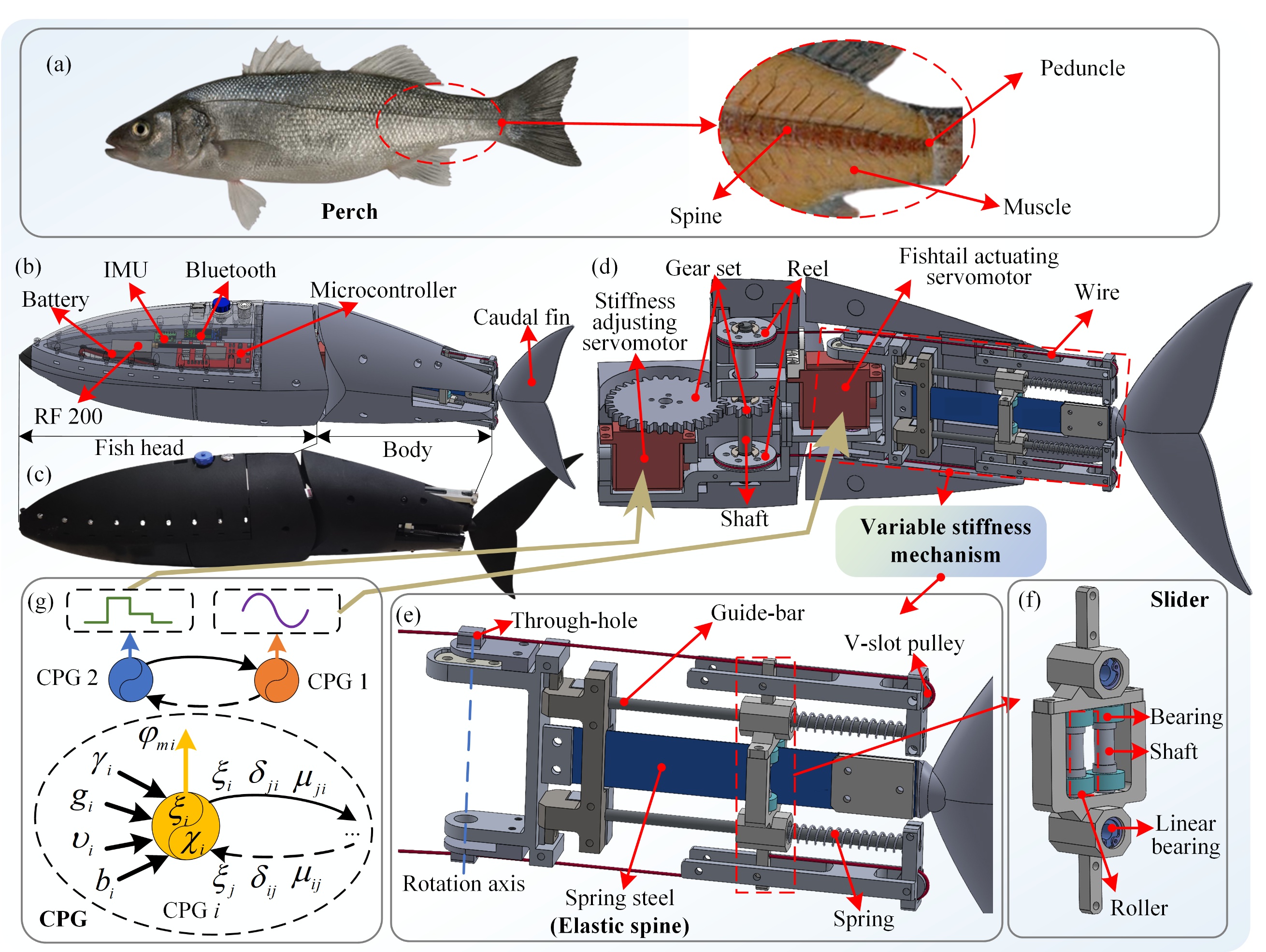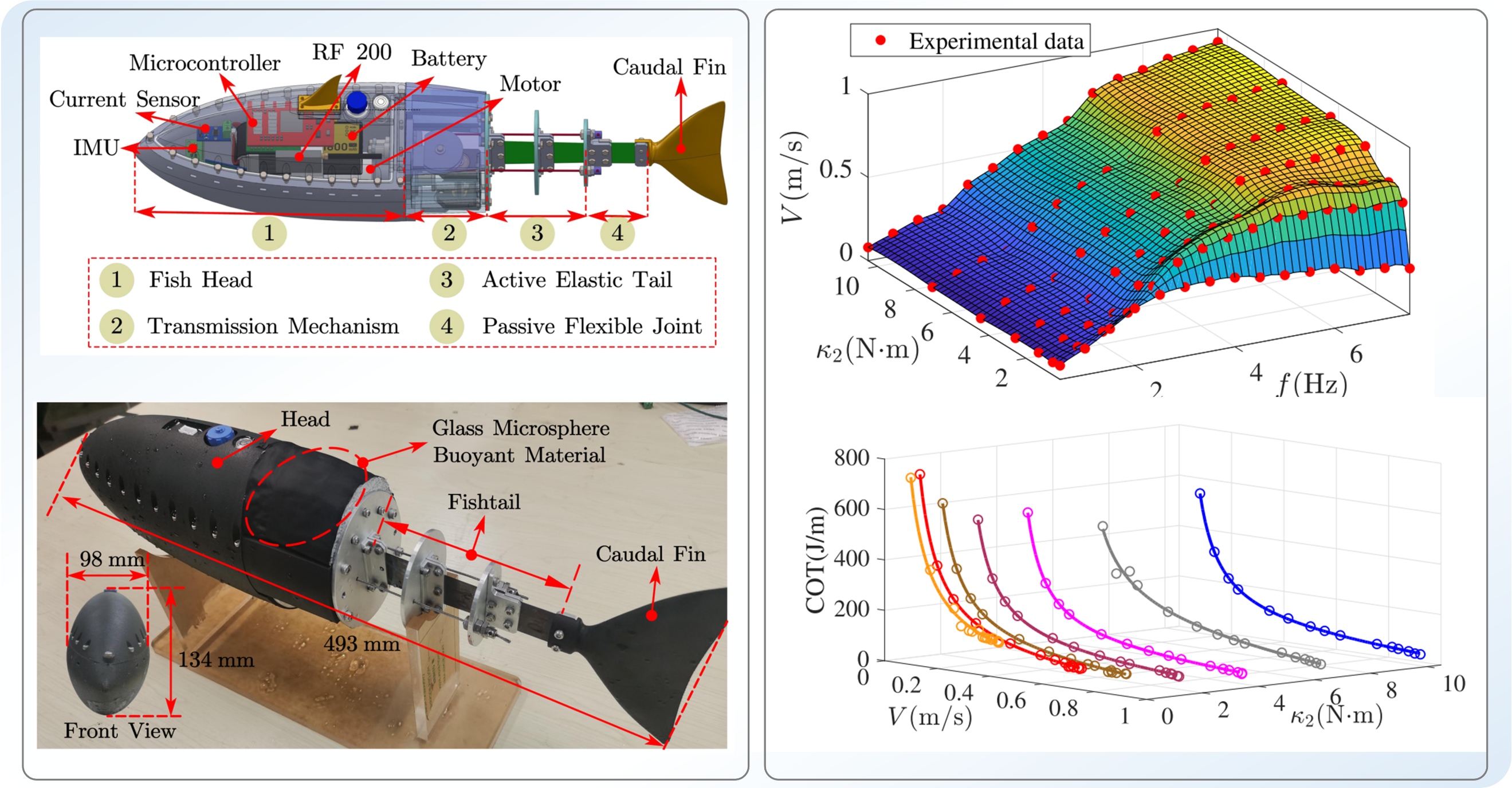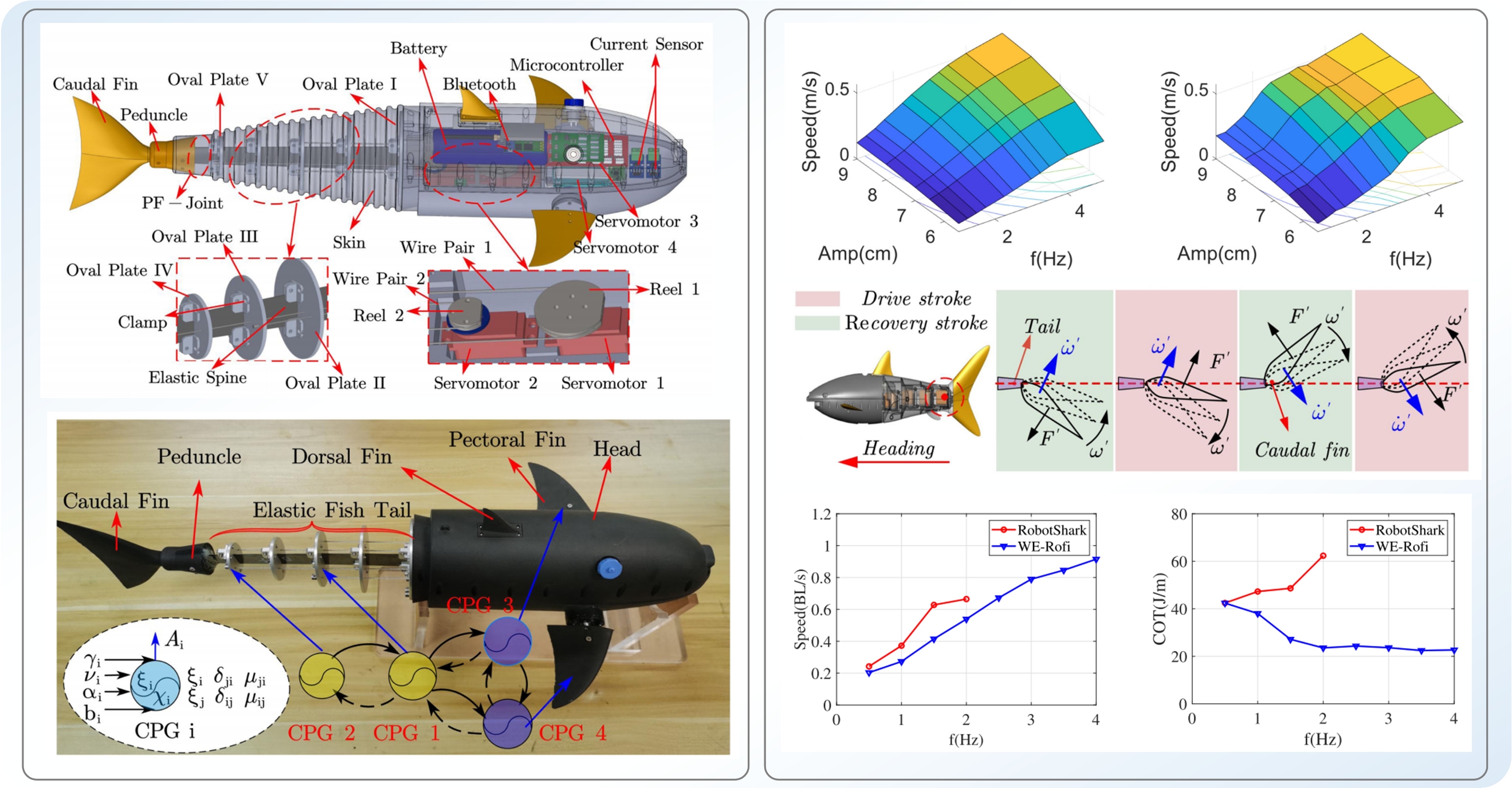Assistant Professor, PhD
 Institute of
Automation, Chinese Academy of Sciences
Institute of
Automation, Chinese Academy of Sciences liaoxiaocun2019@ia.ac.cn | xiaocun.liao@ia.ac.cn
liaoxiaocun2019@ia.ac.cn | xiaocun.liao@ia.ac.cn
Never say never ! 👆

 Institute of
Automation, Chinese Academy of Sciences
Institute of
Automation, Chinese Academy of Sciences liaoxiaocun2019@ia.ac.cn | xiaocun.liao@ia.ac.cn
liaoxiaocun2019@ia.ac.cn | xiaocun.liao@ia.ac.cn
Never say never ! 👆

Representative Research Overview✨ ✨ ✨



The current ongoing research covers the following aspects, and the related results have been published in international journals including Soft Robotics, IEEE/ASME Transactions on Mechatronics, IEEE Robotics and Automation Letters, etc.
Variable Stiffness Robotic Fish✨ ✨ ✨

A Fast Online Elastic-Spine-Based Stiffness Adjusting Mechanism for Fishlike Swimming
Fish tunes fishtail stiffness by coordinating its tendons, muscles, and other tissues to
improve swimming
performance for adapting to the survival needs in different scenarios. For example, fish can dynamically
adjust
fishtail stiffness to adapt to sudden water flow for maintaining high swimming performance.
The stiffness adjustment allows fish to display capabilities during preying and escape.
For robotic fish, achieving a fast and online fishlike stiffness adjustment over a large-scale range
is of great significance for performance improvement.
To this end, a fast online variable stiffness mechanism is proposed.
The fast and online stiffness adjustment over a large-scale range is achieved
by adjusting the effective length of the spring-steel-based elastic spine.
In order to explore the effect of fishtail stiffness adjustment on swimming performance,
the fishtail stiffness model and the response time of stiffness adjustment are
analyzed, and a dynamic model based on Kane method is proposed.
Combining the Morrison equation, Lift-drag model and Computational Fluid Dynamics,
the hydrodynamic force is analyzed.
The ability to adjust stiffness fleetly over a large-scale range
for the designed variable stiffness robotic fish and the accuracy of the proposed model
are verified by the analyses of swimming performances, such as swimming speed and thrust.
The fishtail stiffness can be switched in the maximum adjustable range within 0.26 s, and a maximum
swimming speed of 0.43 m/s (0.81 BL/s) is obtained.
The research has published in Soft Robotics (SCI, Q1, IF: 7.9), DOI: 10.1089/soro.2023.0204.



Combination of C-turn and Online Variable Stiffness Enables Sharp Turning Maneuvers for Robotic Fish
The ability of fish to turn sharply is one of the key skills for surviving in water, allowing them to more effectively tackle multiple survival challenges, including evading predators and pursuing prey, etc. Imitating the sharp turning maneuvers of fish to improve the maneuverability of robotic fish is extremely challenging, but significant to reinforce its practical application capability. This paper proposes a motion control strategy for sharp turning maneuvers of robotic fish, which combines the fish-like C-turn behavior and the variable stiffness mechanism. Based on the developed dynamic model, with the optimization goal of minimizing turning time, the parameters of C-turn motion and fishtail stiffness are optimized to improve the turning efficiency of robotic fish. Simulation and experimental results demonstrate that the proposed turning strategy for robotic fish performs well in shortening turning time and improving turning efficiency. Compared with the strategies for the case of no C-turn and the fixed stiffness, the case of no C-turn and the adjustable stiffness, and the case of C-turn and the fixed stiffness, the turning time for the proposed turning strategy decreases by 53.2%, 41.1%, and 27.9%, respectively. The research has published in IEEE Journal of Oceanic Engineering (SCI, Q1, IF: 5.3), DOI: 10.1109/JOE.2025.3586410.

Wire-driven Robotic Fish✨ ✨ ✨

A Wire-Driven Dual Elastic Fishtail With Energy Storing and Passive Flexibility
Aiming at the shortcomings of the existing wire-driven robotic fish including slow swimming speed and low efficiency, an efficient transmission mechanism is introduced, which can convert the continuous rotational motion of the motor into the fishtail-like back-and-forth swing. A wire-driven flexible robotic fish capable of achieving high-frequency swimming is developed, which meets the need of fishtail stiffness optimization in a wide frequency band. Based on the dynamic model of robotic fish, the energy storages of the fishtail flexibility as well as their impacts on swimming performance are analyzed in turn. The fishtail stiffness is further optimized to improve the swimming performance of robotic fish. The designed wire-driven flexible robotic fish obtains a maximum swimming speed of 0.92 m/s (1.87 BL/s, body length per second) and a minimum COT of 12.17 J/m/kg. The research has published in IEEE/ASME Transactions on Mechatronics (SCI, Q1, IF: 6.4), DOI: 10.1109/TMECH.2023.3318219.


Realize the Design and Motion Modeling of A Dual-wire Driven Elastic Robotic Fish
In order to emulate the complex and continuous tail fluctuations of fish in nature, a dual-wires driven flexible fishtail-like propulsion mechanism is designed. It adopts dual wires to emulate fish tendons for achieving fishtail-like swing, and utilizes spring steel to emulate fish spine, which not only realizes the fish-like mechanism of energy storage and release, but also avoids the friction loss of joint existing in the discrete joint-based bionic spine. Further, the mechanism coupling and kinematic model of the fishtail are analyzed, and a data-driven motion decoupling control algorithm and fishlike fluctuation control algorithm are proposed to realize the fishtail-like fluctuation. In order to evaluate swimming performance, a speed estimation model suitable for steady state analysis and a dynamic model suitable for dynamic analysis are proposed. The accuracies of the two models are verified by the comparison between simulation and experimental speeds at different frequencies and amplitudes. Finally, the new advantage of combining wire-driven mechanism with elastic component in robotic fish is explored. The results show that compared with multi-joints robotic fish, the robotic fish based on dual-wires driven flexible fishtail-like propulsion mechanism can achieve smoother output power of servomotor, smaller load of servomotor, higher swing frequency, faster swimming speed, and lower cost of transport (COT). The research has published in IEEE Robotics and Automation Letters (SCI, Q2, IF: 4.321), DOI: 10.1109/LRA.2022.3197911; Journal of Intelligent & Robotic Systems (SCI, Q3, IF: 3.129), DOI: 10.1007/s10846-022-01797-9; IEEE International Conference on Mechatronics and Automation (EI), DOI: 10.1109/ICMA52036.2021.9512706.
